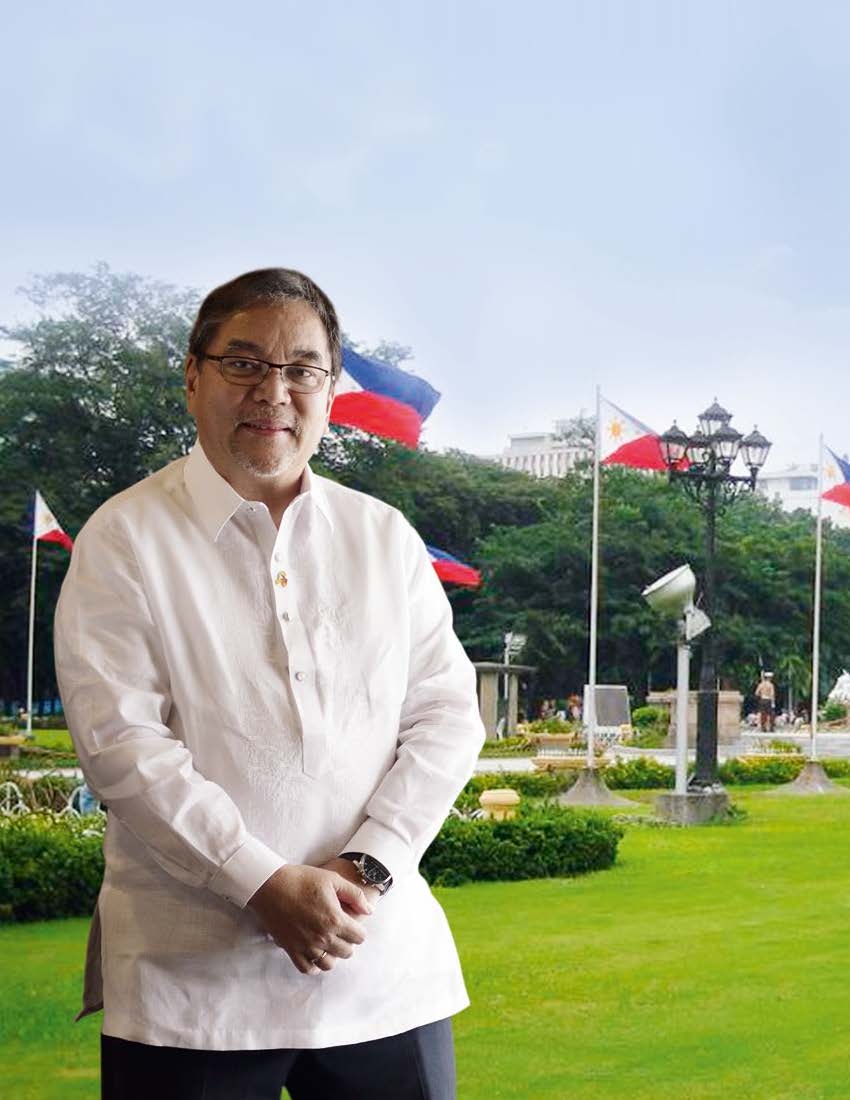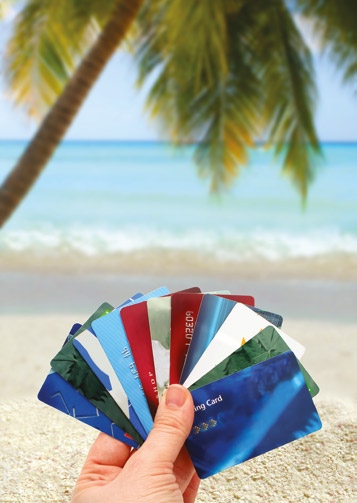Traveling : It’s More Fun in the Philippines!
By Ruth Manimtim-Floresca
Barely half a year in his position as Department of Tourism (DoT) Secretary, Ramon Jimenez, Jr. continues to work hard in making good his promise six months ago to make Philippine tourism the “people’s business”. In a press conference aired live on radio and TV after his appointment, the former advertising executive vowed to galvanize the DoT into an honest-to-goodness selling unit with the ultimate goal to not only improve the statistics but also ensure that the endeavor would be fulfilling and profitable for Filipinos.
In 2010, 3.4 million tourists were recorded to have visited the Philippines. Jimenez reports that the tourism industry has grown at close to 12 percent in 2011. “We reached an all-time high of about 3.9 million tourists. That’s very high for the Philippines, but not quite high enough for the region. The Philippines is still number five behind Vietnam and we are trying very hard to bridge that gap and to overtake, or match, our Asian neighbors because there is no reason why we wouldn’t.”
Marketing the country
Jimenez reveals that the United Nation’s World Travel Organization predicts that there will be about one billion tourists crossing borders this year. “The Philippines has a better than even chance of getting a fair share of that traveling market,” he states. “The challenges therefore would be how to create awareness such that the targets are achieved. Contrary to popular belief, it’s not true that the biggest impediment to travel to the Philippines is infrastructure, all these talk about crime, and our bad reputation, etc. The number one reason why people don’t travel here is just plain lack of information.”
“You’ll be surprised to realize how many people have never heard of the Philippines; have heard of the Philippines but don’t know that it’s in Asia; have heard of the Philippines being in Asia but don’t know what makes it different; have heard of Boracay but not of the Philippines; have heard of the Philippines but not Boracay,” he enumerates. “It’s all just plain lack of information. And that is the major impediment.”
The main job of the DoT, therefore, Jimenez describes, is to create stronger awareness for the Philippines because among those who know about the country, the intention to travel is very, very high. “Meaning, among those who are aware of the Philippines, the rate of conversation from awareness to actual visit is high. So it stands to reason that if we raise awareness, we will raise tourism arrivals,” he explains.
Finding the right campaign
When asked about the now very popular tagline “It’s more fun in the Philippines” and how it was born, Jimenez states that ad campaigns don’t just come about. “You start with a direction and, in our case; we set a direction for all those who are working on the campaign to provide a simple answer to a simple question: ‘Why should someone travel to the Philippines?’ And we found the right campaign because it was the simplest, most direct answer.”
“It’s more fun in the Philippines. As simple as the expression is, it is actually a very powerful, compelling idea that draws its strength from the fact that it is a fundamental truth about the Philippines — that the Philippines is not just a place to see, it is a place to be because it is the Filipino people who complete the experience.”
Jimenez further expounds, “Boracay is just a pile of sand without the Filipinos. You take the Filipinos out of Boracay and it wouldn’t be very much different from other places. It still will be very pretty, but it won’t be as memorable.” Fun, he says, is therefore a function not only of seeing but of experience, about participation. “And that’s because the Filipino takes it upon himself, makes it his personal responsibility to make sure his visitor is okay. It must be something about our DNA. Hindi tayo napapalagay until our visitor is okay,” illustrates Jimenez. “We keep badgering our guests, ‘Are you okay?’ ‘Are you fine?’ ‘Are you having fun?’ etc. Medyo makulit tayo sa ganun.”
According to him, that trait, believe it or not, is a very fundamental difference. “People take it for granted here. But in other countries, they’re polite, yes, they’re welcoming, yes, but their involvement with their visitors ends there,” he compares. “Here, hindi pwede. You stay long enough in the Philippines, magiging ninong ka sa kasal eh. So we are therefore more fun.”
That combination, points out Jimenez, of spectacular scenery and culture plus the gift of the Filipino for making people feel welcome and a part of their lives makes the experience memorable.
Engaging the people
Jimenez also affirms that the phrase ‘It’s More Fun in the Philippines’ is not just something we Filipinos say about ourselves. “It’s what a lot of foreigners who have been here say about us. So it is very powerful.”
“Now, the proof of it is that when we launched it, everyone found his version of it. So far, as of last count, there are over 15,000 memes of the slogan,” he discloses. “We only did three versions and now, I can’t even remember which versions we did and which other people did.”
The campaign was designed to be something that the people would own. “It means the people are part of the product. So we launched it [through] social media because we wanted the average Filipino to take possession of the campaign, which is exactly what [happened]. So, anybody and everybody, from the very clever and witty to the ridiculous and absurd, all kinds of versions have been done.”
Gauging the success of the campaign, Jimenez admits that although they don’t have the actual numbers yet, they are already feeling a surge in tourist arrivals. “But I think any new mass communications campaign would probably take six to eight months to read. So it’s a little too early to tell,” he clarifies. “But judging from the participation, at least from the first half of what we intended to do – getting people to participate; getting people to open Facebook pages dedicated to [the campaign]; getting people to use the slogan in their schools, in their offices, in their speeches, in their jokes — siguro naman it’s been successful.”
Attracting more tourists
Jimenez reiterates that the primary activity of the DoT at the moment is to generate awareness. He recounts his recent trip to Germany where the Philippines participated in the ITB Berlin, the world’s largest travel and tourism trade fair. “All the countries in the world practically have pavilions and outlets there,” he portrays. “You will meet all the buyers; those who include your country in their catalogues, in their promotions, travel magazines, and newspapers. Everybody [in the travel and tourism industry] is there.”
Their effort, he describes, was to introduce the new campaign and to meet the very important buyers and the travel journalists from around the world. “And we got very good feedback,” verifies Jimenez. “We’re hoping of course that would lead to many opportunities.”
As to how they plan to market the Philippines further, Jimenez says it would obviously involve a multi-media campaign that will depend on target countries. “We’ll focus fundamentally on about five or six regions that cover the Korean market, Japan, China, [member countries of] the ASEAN, the United States, which is a very big part of our market, Australia, and the United Kingdom as well as countries in Europe like Germany and even Russia.”
He reveals that they have the same campaign done different ways for different countries depending on their areas of interest. “Obviously when you’re looking at places like Korea, you’re looking at beach vacations [and] some culture. A lot come here for their honeymoon and we are now fast becoming Koreans’ ideal honeymoon place.”
When it comes to Europeans, Jimenez acknowledges that they come here for things like cultural adventures and even bird watching. “And then the Russians come here for everything. They have one week of heavy adventure and cultural tourism like they go to our churches or [look for] crafts and tribes, etc. and [learn about] our history with respect to the Spaniards, the war. And then the other half, they just lie on the beach and then they go home,” he lists down. “Our objective is to keep increasing awareness among all these countries for what the Philippines has to offer.”
Discovering more destinations
Jimenez considers Boracay a national treasure. “We receive more than one million visitors a year now for Boracay. It is its own brand [already] and is considered one of the most important island destinations in the world. Some people specify Boracay in their vacation plans,” he recognizes.
“And then, of course Palawan is growing in importance by the day. The underground river, for example, is already packed to capacity. But still, Palawan continues to develop. There are other beaches and resorts going up,” observes Jimenez who adds that what’s growing ever larger in prominence would be Bohol. “But, strictly speaking, practically everything in the Philippines is potentially popular in the coming years. We will need all of them to accommodate the tourists.”






